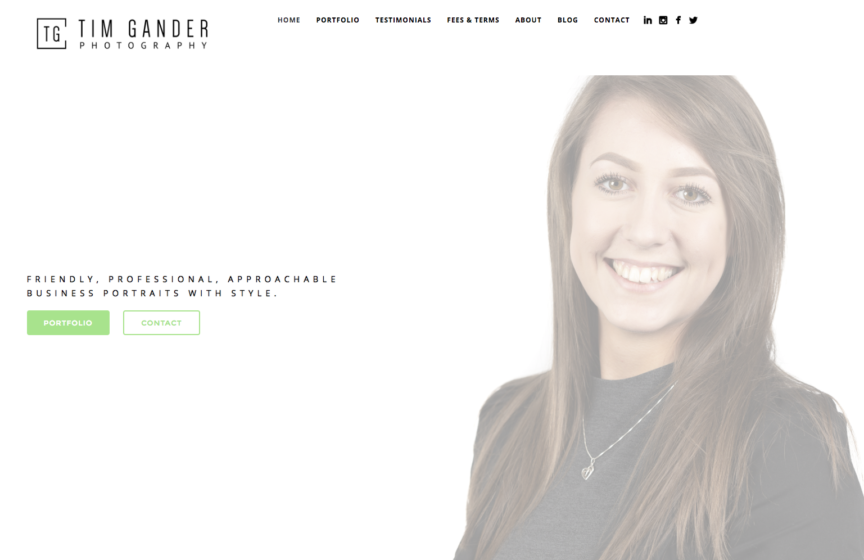Have you ever noticed how male-dominated a lot of business imagery is? And then if there is diversity, it tends to be a rainbow nation of ethnicities and all genders in a slightly bizarre “aren’t we all just so happy to be here with our lattes and iPhones pointing and laughing into the middle distance” sort of a way.
My advice always is to avoid the cliché by featuring your own business and your own colleagues in the images for your website. That way, you’ll represent a natural cross-section of your team.
However there is one area of my own website where I will always favour an image of a female business person over that of a male. The reasons aren’t purely for promoting women in business, but that too is a factor in my policy when deciding which photo should be on the home page.
The thing is, my work consists mostly of corporate portraits, with editorial-style business pictures, conference photography and various other forms of corporate communications photography following in behind, so it makes sense to make my main image a portrait.
Following on from that, for the most part people looking to book me for the work I do will find my website through Google (other search engines are available, but nobody ever uses them) and more often than not it’s marketing managers, office managers and personal assistants who find me. And they’re overwhelmingly female.
So yes, perhaps cynically, I want to make sure that landing on my home page is a comfortable experience for those most often given the responsibility of booking me. Certainly I see no reason why the “hero/ine image” needs to be male, and there’s something to be said for offering a main image to which my core clients can relate.
There is also the practical consideration that if someone landing on my home page sees a male face, there’s a risk they’ll think they’re looking at a photo of me, which if not necessarily upsetting, might at the very least appear conceited. I save my site visitors that particular pleasure for the About page, which when you see it you’ll understand why vanity is probably one of the few vices I don’t suffer from. The reason I feature my face at all is because I believe in practicing what I preach.
This post was inspired by the person who is the latest to be featured on my home page, Hazel, who works for a firm in Bristol. The other week I asked Hazel if she’d mind being featured, and the points outlined above are pretty much how I framed my request. Hazel completely understood and had no qualms about being featured on my home page, which is great because not all headshots necessarily fit, but her company’s portrait requirements work well within the space.
So thanks Hazel! And to anyone out there I photograph in future, especially women, don’t be surprised if I ask you too – I do like to update that page whenever I can. Equally I’ll understand if you’d rather not be featured, but at least if you’ve read this article you’ll understand why I’ve asked in the first place.



